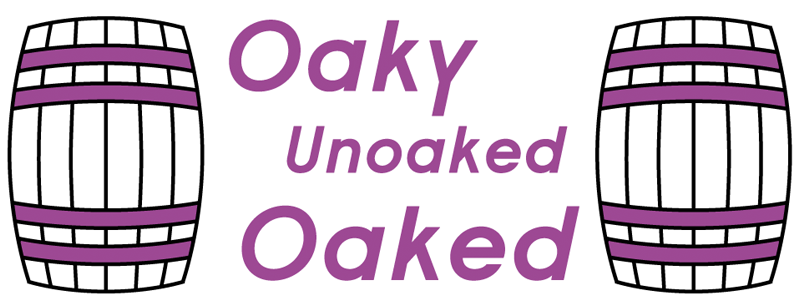Many wines can benefit from coming in contact with oak. (To learn how winemakers first realized this, read our article about the history of storing wine in oak.) Oak can enhance the color of the wine, soften and round out flavors, and impart its own unique characteristics. Almost all red wines and many white wines spend time in oak barrels before being bottled, and that’s just because winemakers have found they taste better that way.
We like to think of a winemaker using oak as a chef would use salt, you use a little or a lot to either just slightly bring out other flavors, or to have the oak’s own characteristics play a more prominent role. However, just as a chef can use too much salt in a dish, so to can a winemaker use too much oak in a wine. If all you taste is the characteristics of the oak, instead of the fruit, we say the wine is not balanced. If you drink a wine that tastes like liquid butter, that wine has way too much oak.
So how do you recognize when a wine has been oaked? When a wine sits in oak to age, the oak slowly imparts its flavors and colors into the wine. If this is a white wine, the longer the wine sits in oak, the darker a yellow it will become, almost mimicking the hue of straw. If the wine is red, color is not affected as much, but often the longer the wine sits in oak, the darker red it can become.
In terms of flavors, living inside oak is a compound known as vanillin, which as the name suggests, tastes like vanilla. When a wine sits in oak for a long time, that compound leaves the wood and transfers into the wine, which is why many white wines, especially Chardonnay, can have such prominent vanilla flavors. Other flavors that can be enhanced by oak are mocha, caramel, toffee or honey.
If you find you don’t like wines with a lot of oak, especially white wines, a general rule is that California wines, especially those that are mass-produced, tend to over-oak more than other regions of the world.
If it’s still unclear how much oak can affect a wine, here’s a great side-by-side tasting you can do. Purchase a Chardonnay that has been aged in oak and one that has been unoaked (aged in steel). Pour both wines into glasses and try one after the other. In the unoaked wine you will taste the fruit prominently and there will be more acidity present, it will taste “fresher” (sometimes winemakers will say an unoaked wine is naked). In the oaked wine the fruit will still be present, but it won’t be as bright and crisp, instead it will be in balance with other flavors, such as vanilla and spices. It will also have a fuller mouthfeel.
If you find you don’t like wines with a lot of oak, especially white wines, a general rule is that California wines, especially those that are mass-produced, tend to over-oak more than other regions of the world. Avoid those and you’ll find wines that are balanced and delicious, benefiting from oak’s influence and characteristics.
